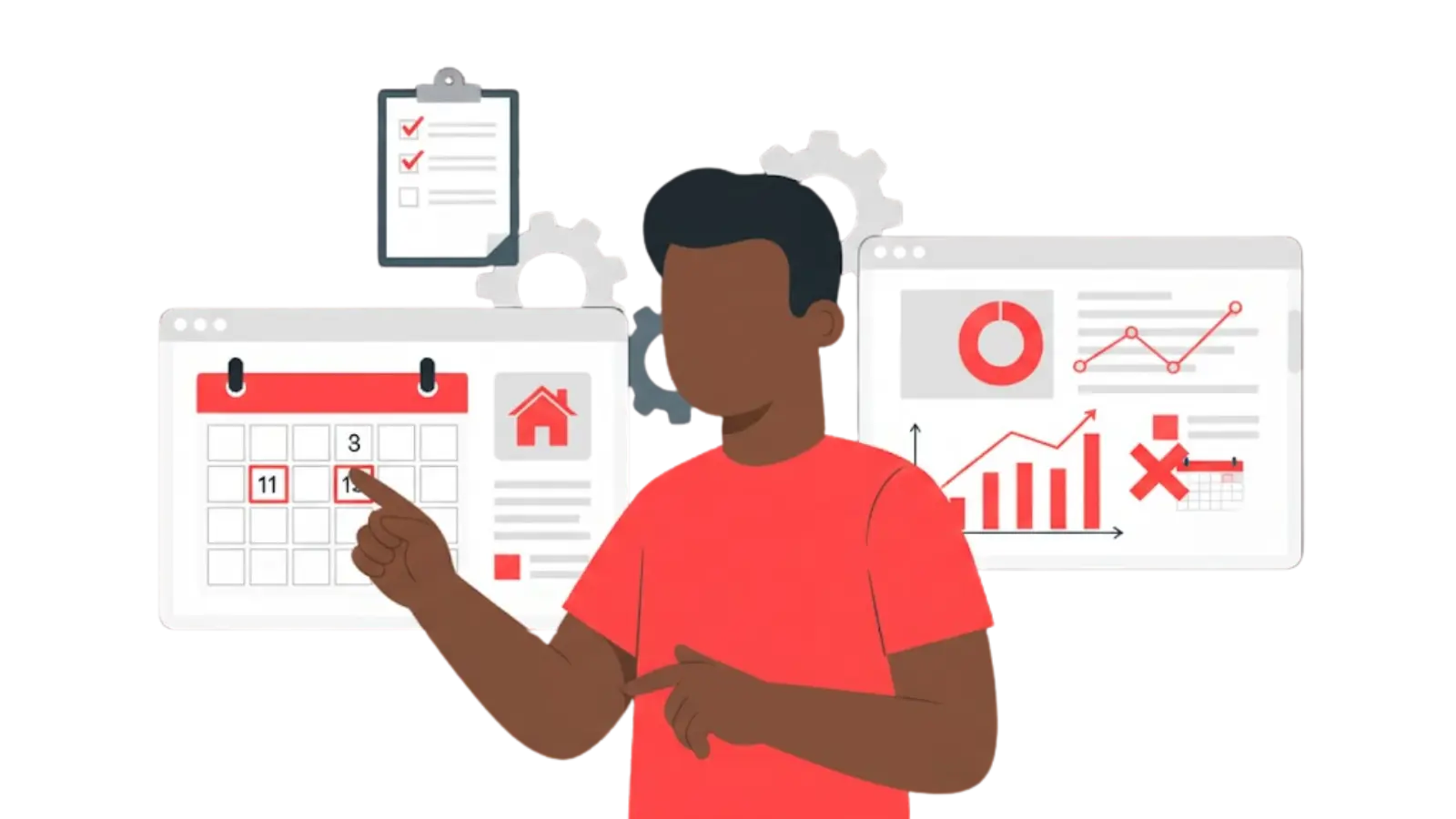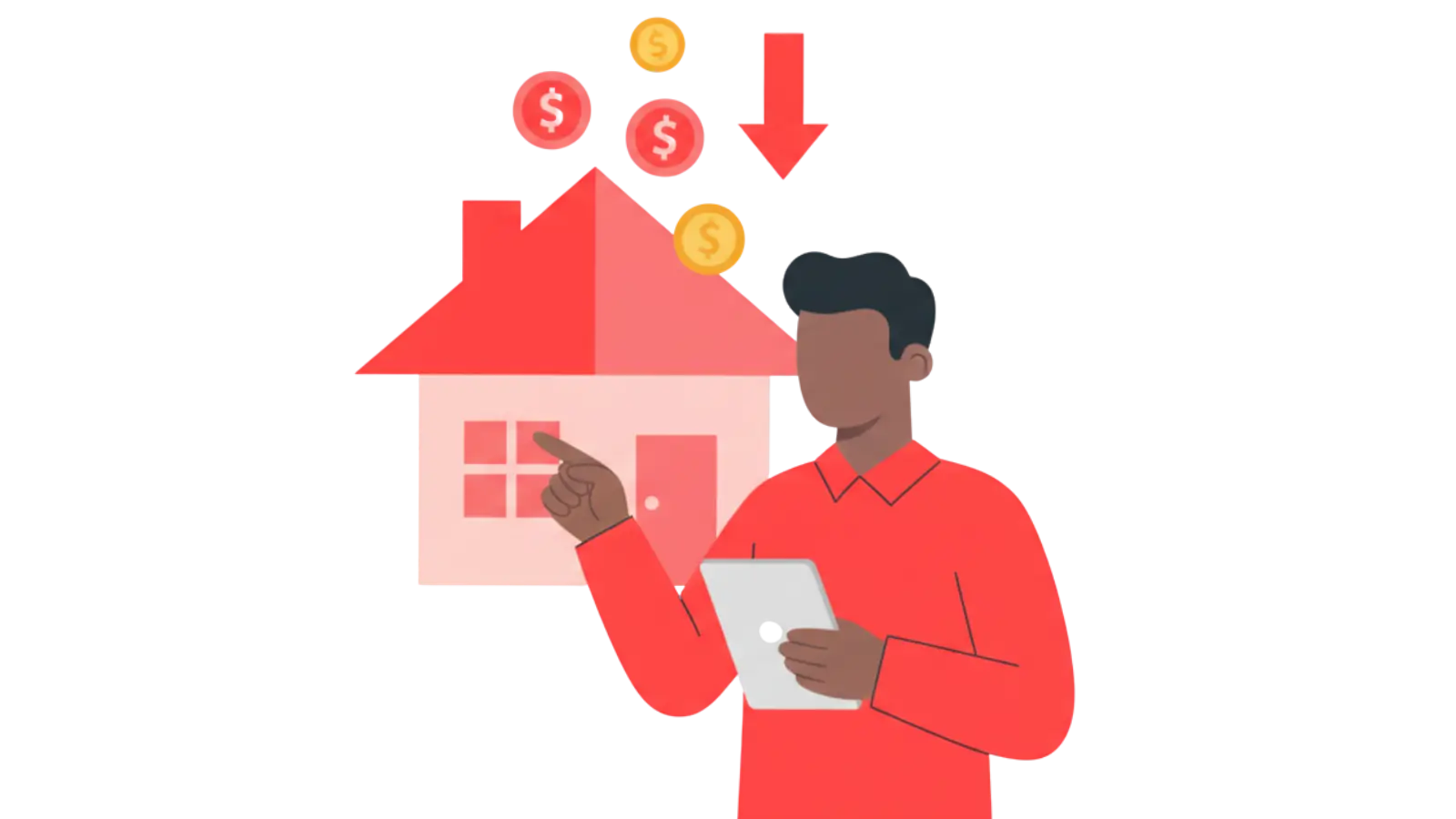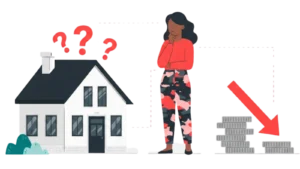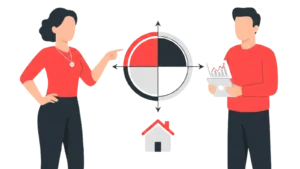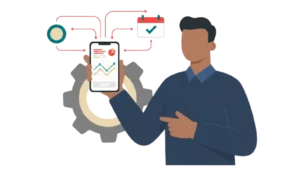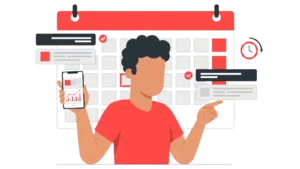Updated : Mar 17, 2025
You’re renting out a beachside cottage. If most of your guests book two months in advance, wouldn’t it help to know this so you can plan your pricing and promotions?
That’s exactly what is a booking window for you.
A booking window refers to the time between when a guest makes a reservation and their check-in date. Whether it’s early planners snagging summer dates or last-minute travelers booking a quick weekend getaway, understanding these patterns can help you boost revenue, fill gaps in your calendar, and deliver the perfect guest experience.
What is a Booking Window?
A booking window refers to the time span between when a guest makes a reservation and their check-in date. Think of it as the lead time you have to prepare for their stay. It’s a vital vacation rental KPI that helps short-term rental hosts understand guest booking behaviors and refine their strategies.
Here’s a simple formula to calculate the booking window:
Booking Window (in days) = Check-in Date – Booking Date
For example, if someone books your property on January 1 for a stay starting January 15, the booking window is calculated as:
January 15 (Check-in Date) – January 1 (Booking Date) = 14 Days

You can use PriceLabs Neighborhood Data to understand your market’s booking window. The Market Booking Window displays how far in advance dates are booked in your market. This metric shows you the number of between the data of the booking to when they stay at your property.
Why Does Understanding Booking Windows Matter?
Every short-term rental market has unique booking patterns influenced by factors like location, seasonality, and guest demographics.
Understanding your property’s booking window can help you unlock the following benefits:
- Boost Occupancy Rates: If you notice that most guests book last minute (within 7 days of check-in), you can implement last-minute discounts to attract spontaneous travelers. For example, a 10% discount for bookings made within a week of check-in can fill gaps in your calendar. On the other hand, if your guests tend to book months in advance, you can create early-bird promotions to incentivize planning.
- Optimize Pricing Strategies: Dynamic pricing tools like PriceLabs can adjust nightly rates based on your property’s typical booking window. For instance, if guests usually book 30 days out, increase prices slightly 45 days before check-in and offer discounts as the date approaches to maximize revenue. A ski chalet might charge premium rates 60 days before peak winter holidays but gradually reduce prices as the check-in date nears if occupancy remains low.
- Enhance Operational Efficiency: You can better manage cleaning schedules and inventory restocking by tracking booking windows. For instance, if most bookings occur 10-15 days before check-in, you can plan maintenance or deep cleaning for slower periods.
- Improve Marketing Efforts: Target guests based on booking behaviors. If your data shows that families book 90 days out while solo travelers book within 2 weeks, tailor your ad campaigns accordingly. Use early-bird discounts for family trips and flash sales for last-minute solo bookings. A lakeside cabin might launch a “Summer Sale” in the summer for early planners while running Instagram ads in late June targeting weekend getaways.
By leveraging these insights, you’re not just reacting to guest behavior—you’re anticipating it and aligning your operations, pricing, and budget marketing to stay ahead of the curve.
Get more returns with PriceLabs Dynamic Pricing Tool
Use PriceLabs to understand your property's booking window to optimize your minimum stay restrictions and occupancy.
Start your 30-day FREE trial now!5 Ways to Optimize Your Booking Window
To make the most of your booking window data, follow these detailed strategies:
1. Adjust pricing dynamically
When you understand how your booking windows, you should leverage that data to then capitalize on the demand. For example, if most of your bookings come in at the last-minute (probably 2-3 days before the booking date), then you can charge a premium for all of those last–minute bookings because your turn-around cost would also be high to ensure that your property is ready between each booking.

Or if you get a lot of bookings at least a month ahead, you can adjust far-out prices accordingly. If you want you can add a premium for bookings made far in advance. You can adjust that using far-out prices.

2. Leverage minimum stay requirements
Longer booking windows often come with longer stays. Encourage these by setting minimum stay requirements for early bookings. For shorter booking windows, especially last-minute stays, consider reducing the minimum stay requirement to capture spontaneous travelers.
LOS vs. Booking Window charts in PriceLabs Market Dashboard compares the booking window to the length of stay for booked nights. The number of busy nights for each lead time range is presented in the left chart, and the number of occupied nights booked in each stay length category is presented in the right chart.
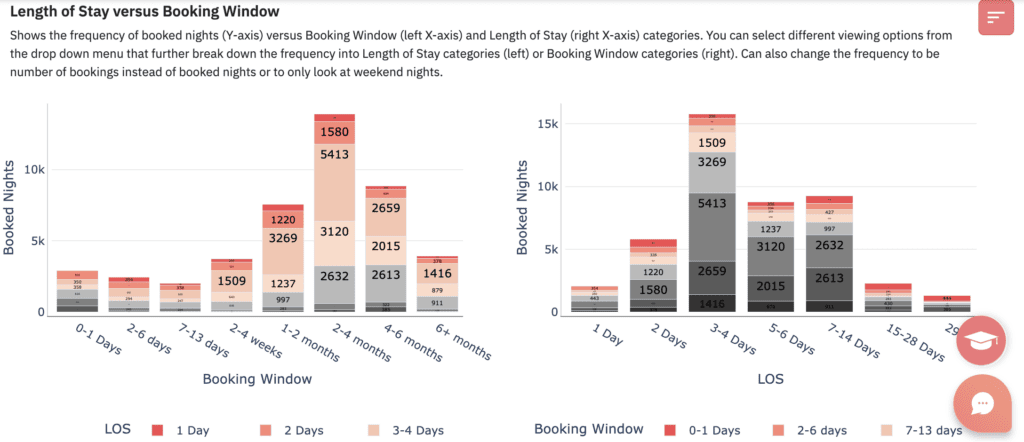
Build intelligent, data-driven revenue strategies
While understanding expenses, you should also understand how the market is faring with regards to their costs. Create a Market Dashboard for your market and deep-dive into data-driven insights.
Create your dashboard now!If you find that your LOS is around 3-4 days, you can set this up in your PriceLabs Minimum Night Stay Requirements. You can either do all your work manually, or leverage our Minstay Recommendation Engine is a data-driven tool that provides dynamic minimum night recommendations for vacation rental properties.
It leverages historical data, market trends, and other relevant factors to suggest the optimal minimum length of stay for each date. The engine analyzes factors such as booking patterns and seasonal demand to make intelligent recommendations.
3. Market to specific booking window
To tailor marketing campaigns for different traveler types, focus on their unique needs and booking habits:
- Families: Promote early-bird discounts via email and social media, highlighting family-friendly amenities like spacious rooms and proximity to attractions. For example: “Book early for your family vacation and save 15%!”
- Couples: Offer romantic getaway packages through email and Instagram, showcasing cozy, private spaces. For example: “Book a romantic weekend and enjoy a 10% discount!”
- Business Travelers: Target LinkedIn and email campaigns, emphasizing workspaces and productivity features. For example: “Stay productive on your business trip—10% off your next stay!”
- Solo Travelers: Use Instagram and email to highlight safety and personal stories, offering discounts for solo bookings. For example: “Solo adventures await—save 20% on your next trip!”
- Spontaneous Bookers: Run flash sales on platforms like Airbnb with limited-time offers for last-minute bookings. For example: “Last-minute deal! Book now and save 20%!”
4. List on multiple platforms
Listing your property on multiple platforms can help attract diverse audiences:
- Airbnb: Ideal for both early planners and spontaneous travelers. It’s a popular choice for short stays, unique experiences, and weekend getaways. Focus on eye-catching photos and a detailed description to attract last-minute bookers while offering early-bird discounts for those planning ahead.
- Vrbo: Primarily attracts family vacation planners who value spacious accommodations and amenities for larger groups. Highlight features according to Vrbo listing descriptions like multiple bedrooms, kid-friendly spaces, and proximity to family-friendly attractions to appeal to this audience.
- Booking.com: Popular with last-minute bookers and international travelers. Listing here increases visibility for those looking for quick, reliable bookings. Provide clear information on amenities, availability, and location to cater to travelers seeking ease and flexibility.
5. Optimize your listing
To optimize your listing, tailor your property description and photos based on booking windows:
- For Early Planners: Highlight features that appeal to those who book in advance, such as discounts for early bookings, spacious family-friendly amenities, and proximity to popular events or seasonal attractions.
Include clear details about the benefits of securing a stay early, like cost savings or exclusive perks. Showcase high-quality photos of large living areas, kid-friendly spaces, and nearby attractions. For example: “Book early and save 15%! Spacious family-friendly home near [Popular Event]—perfect for your next vacation!” - For Last-Minute Travelers: Focus on flexibility and convenience. Emphasize quick check-in processes, immediate availability, and any last-minute offers or discounts.
Use photos that highlight easily accessible features and stress the ease of booking at the last minute. For example: “Ready for a spontaneous getaway? Book now and enjoy flexible check-in and 20% off!
Frequently Asked Questions
1. What is the ideal booking window for short-term rentals?
The ideal booking window varies by location, property type, and season. Analyze your data to identify trends that work best for you
2. How do seasons affect booking windows?
Peak seasons often have longer booking windows as guests plan ahead. Shoulder and off-peak seasons typically see shorter lead times
3. Can I adjust my booking window strategy mid-year?
Absolutely. Regularly review booking trends and performance metrics to tweak your strategy as needed
Final Thoughts
Understanding and optimizing your booking window isn’t just about filling your calendar—it’s about aligning with guest behaviors to maximize revenue and deliver exceptional experiences. Tools like PriceLabs empower you to analyze data, implement dynamic pricing, and cater to diverse traveler profiles.
Whether you’re targeting early planners looking for summer vacations or last-minute adventurers seeking weekend getaways, a well-optimized booking window strategy ensures your property stands out. Start analyzing your data today and unlock your property’s full potential!




